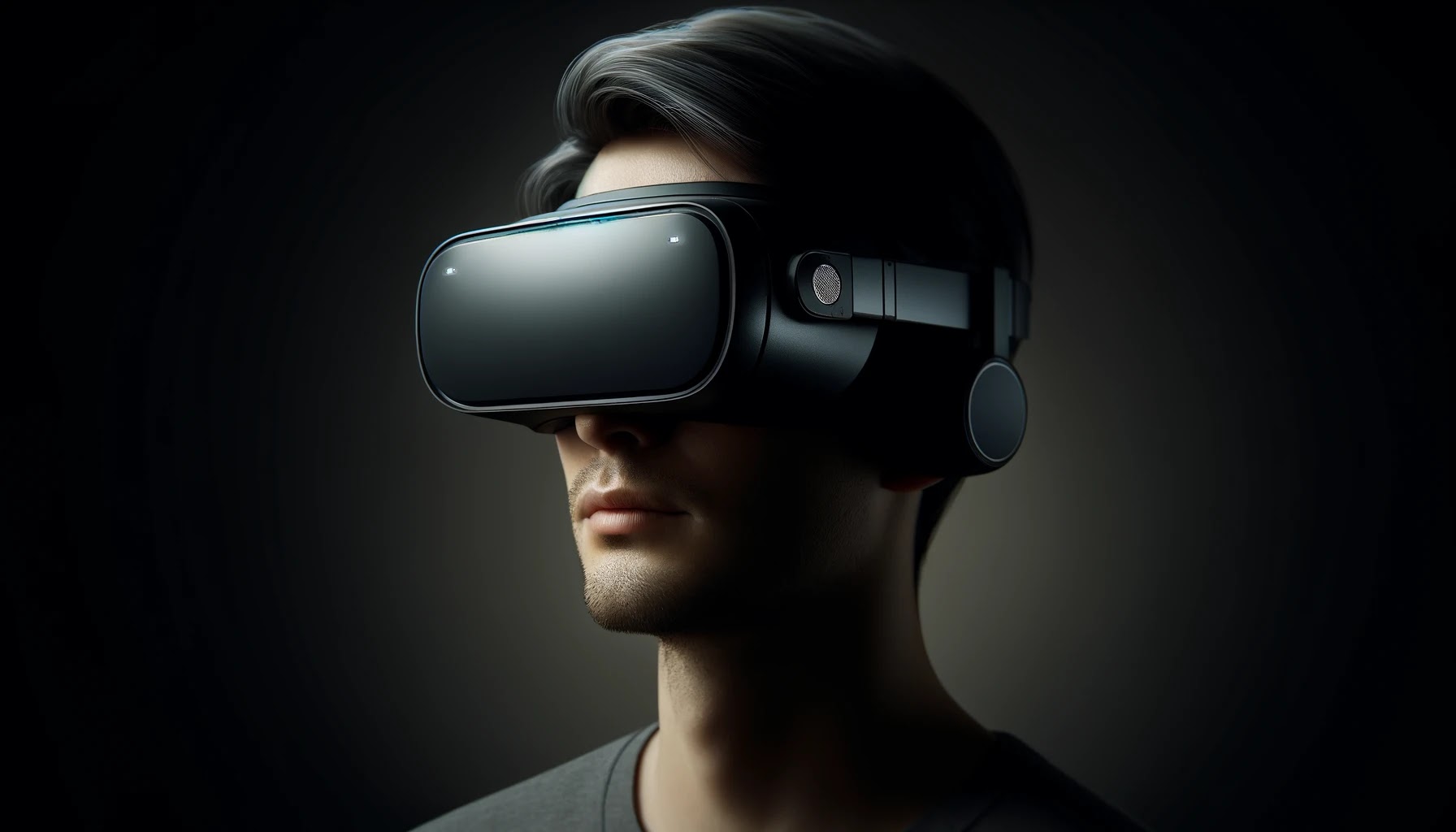Virtual Reality (VR) has emerged as one of the most transformative technologies of the 21st century, pushing the boundaries of how we interact with digital environments and each other. Originally envisioned as a tool for gaming and entertainment, VR has rapidly evolved into a versatile platform with applications spanning education, healthcare, training, social interaction, and beyond. As we look forward to 2024, VR is poised to redefine digital engagement, offering immersive experiences that blur the line between the virtual and physical worlds. Here’s a comprehensive look at the current state of VR, its recent advancements, and what lies ahead.
What is Virtual Reality?
Virtual Reality is a simulated experience that can replicate or differ significantly from the real world. It typically involves the use of a VR headset that immerses the user in a three-dimensional environment, providing sensory feedback through visual, auditory, and sometimes haptic (touch) cues. Unlike traditional media, VR allows users to interact with the environment in real-time, creating a sense of presence and immersion that is unparalleled.
VR technology is built on several core components, including head-mounted displays (HMDs), motion tracking sensors, and software platforms that create 3D environments. Together, these elements create a cohesive and engaging virtual experience that can be used for various applications, from gaming and simulation to therapy and remote collaboration.
Recent Advancements in Virtual Reality
The field of Virtual Reality has seen significant growth and innovation in recent years. Here are some of the most exciting advancements:
1. Next-Generation VR Headsets:
One of the most notable advancements in VR is the development of next-generation headsets. Companies like Meta (formerly Facebook), Sony, HTC, and Valve are leading the charge with devices that offer improved resolution, wider fields of view, and greater comfort. The latest headsets, such as the Meta Quest 3 and Sony's PlayStation VR2, feature advanced OLED displays with high refresh rates, providing a clearer and more immersive visual experience.
These headsets are also more lightweight and ergonomically designed, reducing user fatigue and enabling longer sessions. Additionally, they incorporate advanced tracking technologies, such as inside-out tracking, which eliminates the need for external sensors and enhances mobility and freedom within the virtual space.
2. Haptic Feedback and Sensory Immersion:
A major focus in VR development has been enhancing sensory immersion. Haptic feedback technology has advanced significantly, allowing users to "feel" the virtual world. Companies like HaptX and SenseGlove are developing gloves and suits that provide tactile feedback, simulating the sensation of touch. These innovations enhance realism and engagement, particularly in applications like training, simulation, and therapy.
Moreover, advancements in spatial audio technology have further enriched the VR experience. Modern VR systems use binaural and 3D audio to create realistic soundscapes, allowing users to perceive sound direction and distance as they would in the real world. This adds a new layer of immersion, making virtual experiences more lifelike and engaging.
3. VR in Education and Training:
VR has made substantial inroads into education and professional training, offering immersive and interactive learning experiences. In classrooms, VR is being used to transport students to historical sites, distant planets, or even inside the human body, making learning more engaging and effective.
In professional settings, VR is revolutionizing training programs. For instance, in industries like aviation, healthcare, and manufacturing, VR simulations provide a safe and controlled environment for practicing complex procedures and handling high-risk situations. This immersive training approach improves retention rates and skill acquisition, reducing the cost and risk associated with traditional training methods.
4. Social VR and Virtual Collaboration:
With the rise of remote work and the need for more engaging virtual interactions, VR has emerged as a powerful tool for social and professional collaboration. Platforms like VRChat, Meta's Horizon Workrooms, and Microsoft's Mesh for Teams are enabling people to meet, collaborate, and socialize in virtual spaces.
These platforms provide customizable avatars, interactive tools, and virtual meeting environments that make remote collaboration more dynamic and productive. By creating a sense of presence and togetherness, VR is helping bridge the gap between physical and virtual workspaces, fostering a new era of digital connectivity.
5. Therapeutic Applications of VR:
VR is increasingly being recognized for its therapeutic potential in healthcare. From treating PTSD and anxiety disorders to providing pain relief and rehabilitation, VR offers unique benefits that traditional therapies cannot match. VR environments can be tailored to individual needs, allowing therapists to create controlled scenarios that help patients confront and manage their fears in a safe setting.
Virtual Reality is also being used in physical rehabilitation, where immersive environments encourage patients to perform exercises and regain mobility. The engaging nature of VR helps improve patient compliance and outcomes, making it a valuable tool in modern medicine.
Challenges and Considerations in VR Development
While VR continues to advance, it faces several challenges and considerations:
1. Accessibility and Affordability:
Despite the significant advancements, VR technology remains relatively expensive and inaccessible to many. High-end VR headsets and equipment can be costly, limiting widespread adoption. Moreover, VR experiences often require powerful computers or gaming consoles, adding to the overall cost. Making VR more affordable and accessible is a key challenge that needs to be addressed for broader consumer adoption.
2. Physical and Cognitive Strain:
Extended use of VR can lead to physical discomfort, such as eye strain, motion sickness, and fatigue, known as "cybersickness." This is particularly challenging for individuals who are more sensitive to motion or have underlying health conditions. Developers are working to mitigate these issues by improving hardware ergonomics, reducing latency, and enhancing motion tracking, but more work is needed to make VR comfortable for prolonged use.
3. Content Development and Variety:
While the technology for VR has rapidly evolved, content development has lagged behind. There is a need for more diverse and high-quality VR content that caters to different interests and needs. From educational programs to interactive entertainment, expanding the content library will be crucial for sustaining user interest and engagement.
4. Privacy and Security Concerns:
As VR platforms become more integrated with social media and professional environments, concerns about data privacy and security are growing. VR systems collect a vast amount of personal data, including biometric information, which raises concerns about data misuse and unauthorized access. Ensuring robust privacy and security measures are in place is essential to maintaining user trust and protecting sensitive information.
The Future of Virtual Reality
Looking ahead, the future of VR is incredibly promising, with several trends and technologies likely to shape its evolution:
-
Full-Body Tracking and Enhanced Haptics: Future VR systems are expected to include full-body tracking and more sophisticated haptic feedback, providing a truly immersive experience. This will allow users to engage in activities like virtual sports, dance, and physical training with a high degree of realism.
-
Mixed Reality (MR) Integration: The convergence of VR and Augmented Reality (AR) into Mixed Reality (MR) is a natural progression. MR systems will enable seamless transitions between the physical and virtual worlds, allowing users to interact with digital objects in real-world settings. This will have applications in gaming, education, training, and everyday productivity.
-
AI-Driven Personalization: Artificial Intelligence will play a significant role in the future of VR, providing personalized experiences tailored to individual preferences and behaviors. AI algorithms will help create adaptive environments that respond dynamically to user input, enhancing the overall experience.
-
Advancements in Cloud VR: Cloud computing will further democratize VR by offloading the processing requirements to remote servers, making VR accessible on less powerful devices like smartphones and standalone headsets. This could significantly reduce costs and expand the user base.
Conclusion
Virtual Reality is rapidly transforming from a niche technology into a mainstream platform with the potential to revolutionize how we live, work, and play. As we continue to push the boundaries of what is possible with VR, the line between the virtual and physical worlds will become increasingly blurred, creating new opportunities and experiences that were once only imaginable in science fiction.
The journey of VR is just beginning, and its impact on society is likely to be profound and far-reaching. With continued advancements and innovations, Virtual Reality is set to become an integral part of our digital lives, offering limitless possibilities for exploration, connection, and growth. Stay tuned as we step into a future where virtual and reality are one and the same.






